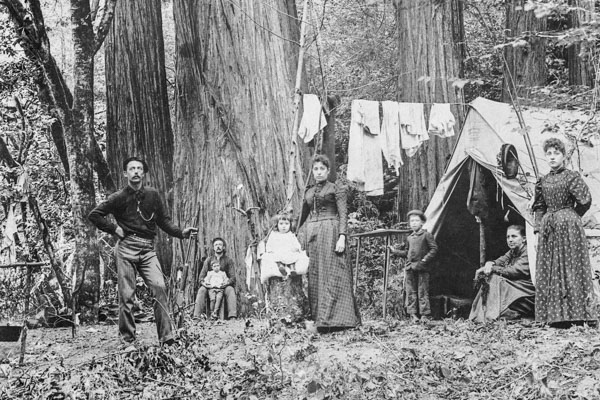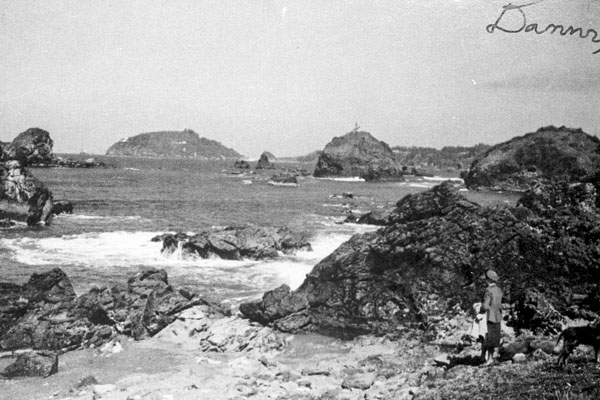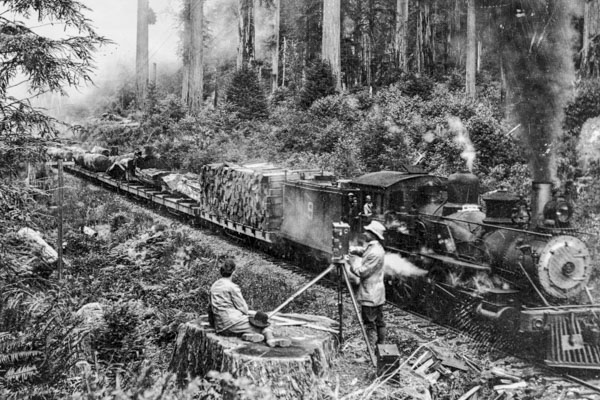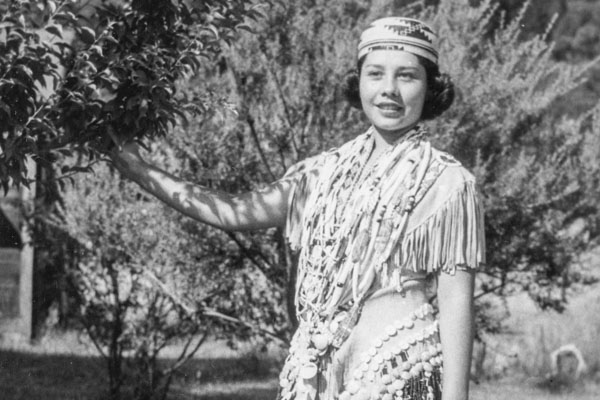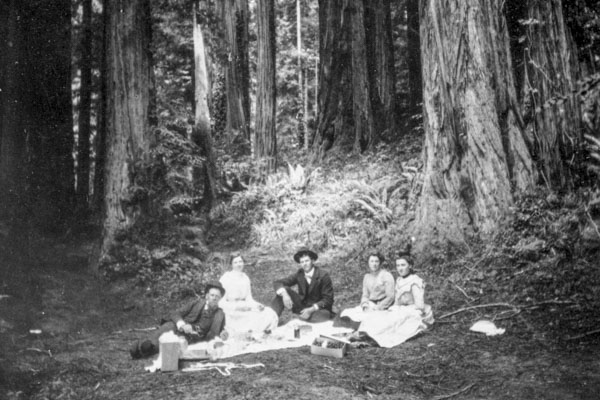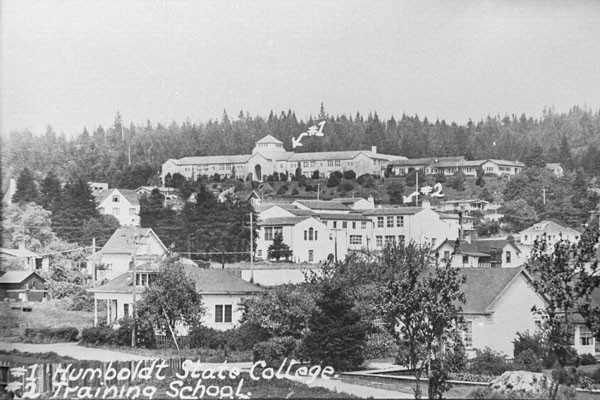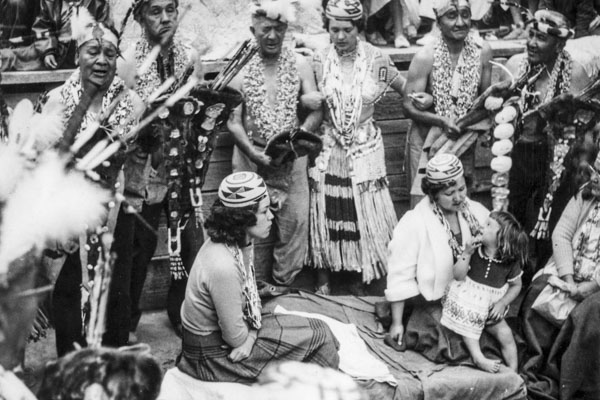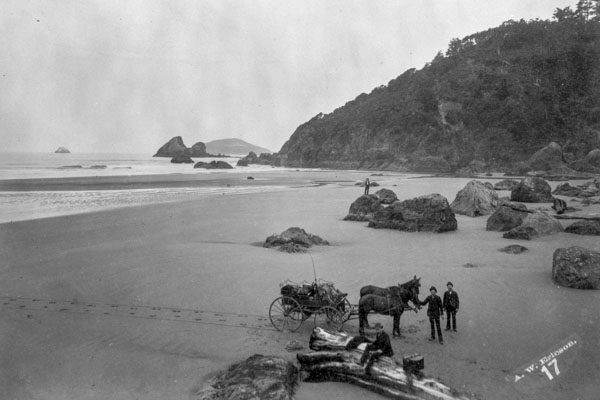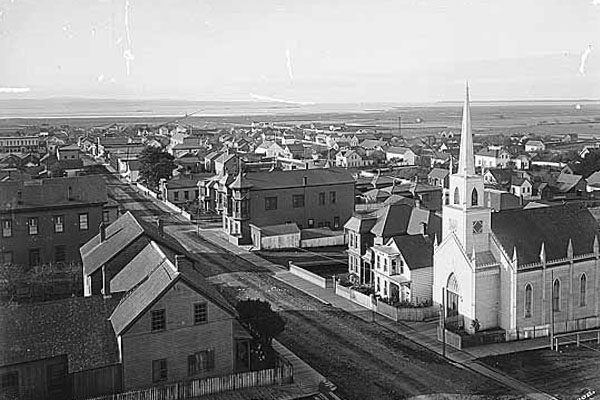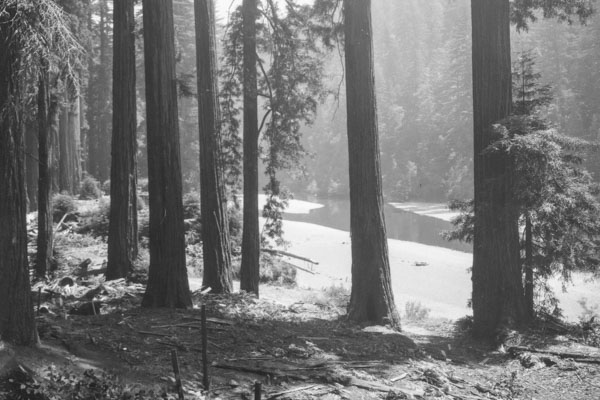You are here
Humboldt Watershed Council and Salmon Forever Video Collection - Finding Aid
Collection Number
2022.02
Contact Information
The University Library, Special Collections
Cal Poly Humboldt
One Harpst Street
Arcata, California 95521
URL: https://specialcollections.humboldt.edu/humboldt-watershed-council-and-salmon-forever-video-collection-finding-aid-0
Collection Creators
Howard Russell, plus video donations from Bob Kramer, Emelia Berol, James (Duff) Ficklin, Kay Rudin, and others.
Dates covered by the Collection
1980-2005 (date span)
1998 - 2004 (bulk dates)
Processed by
Edith Butler, MA, CA Emeritus from 2012-2020. Jimmy Foot (Bongo Boy) reformatted to digital.
Tristan Fritsch, Samantha Pate and Azrael Tapia, Special Collections Student Assistants
Date Collection Processed
2012-2020 The collection is partially processed.
Language
English
Size of Collection
Digital files stored on Seagate “Backup Plus” 4TB hard drive.
9 cubic feet. 520 items. Nearly all are DVD, a few were audio tapes reformatted to CDs.
Abstract
Humboldt Watershed Council and Salmon Forever were two closely connected organizations active in Humboldt County in the mid 1990s-early 2000s. Salmon Forever undertook scientific monitoring and education activities and Humboldt Watershed Council undertook political educational activities. Video documentation was widely used in each organization and this Collection contains the work of both organizations.
These tapes show how the citizens of Northwest California acted to protect some of the watersheds of northwest California and to stop the harmful and accelerated logging practices of an absentee owner: Maxxam, which owned Pacific Lumber from 1986 until it drove the company into bankruptcy in 2007. The tapes are important primary historical documents for understanding the ways citizens respond to an outsider threating their wellbeing. Each tape holds a fragment of the overall picture, and taken together this collection covers a pivotal period of citizen advocacy. Videos documented the destructive logging practices, the resultant protest activities, the evidence gathering efforts, and the testimony given at hearings.
Access
Open by appointment only. The collection is partially processed.
Copyright
Shared Copyright: Howard Russell donates copyright for the unpublished materials he created to Cal Poly Humboldt AND he retains copyright for himself and for his wife, Jen Card, for the duration of their lives.
Preferred Citation
[identification of item], Humboldt Watershed Council and Salmon Forever Video Collection, Cal Poly Humboldt
Acquisition Information
Howard Russell accumulated nearly all of the materials. A few came directly from Ken Miller who collected the Humboldt Watershed Council’s papers before donating them to Cal Poly Humboldt Library. Howard Russell was the videographer for the vast majority of the items; other videographers passed on their work to Russell. The condition of the tapes began to deteriorate and show mold growth after being stored in various locations at Russell’s home and property.
Edith Butler (a neighbor of Russell’s) became increasingly concerned about these primary source materials surviving and impulsively one day (in 2010?) offered to take the collection to her home. This offer was accepted and the responsibility for the wellbeing, and the reformatting fell to Edith Butler. Howard Russell was still the legal owner of the collection and it is part of the Humboldt Watershed Council’s materials.
Biographical Information
Howard Russell (of Deju View Video Services) spent six years video recording public hearings, tree-sit events, demonstrations, residents’ depositions and other events related to Humboldt Watershed Council’s and Salmon Forever’s purposes.
Funding
In 2013 Erich Schimps established the North Coast Environmental History Resource Recovery and Preservation Fund at the Humboldt Area Foundation for the purpose of funding this reformatting project. Major donations were made by Erich Schimps and by the Jill Irvine Memorial Fund (at Humboldt Area Foundation). Other donors were: Vincent Peloso and Debbi Krukonis, Elaine Gray, Wildberries Marketplace, Chirs Walker, Patsy Givins, North Group Sierra Club, Tom and Sue Leskiw, and Clark Fenton.
Scope and Content
The early 1990s through 2004 was a time when hundreds of Northwest California citizens protested destructive logging practices and urged regulatory agencies to promote more sustainable forest management policies. The Humboldt Watershed Council’s (HWC) broad-based membership was central to keeping the focus on the key issues and to educating the public. Salmon Forever had a smaller membership and focused on citizen science by documenting the sediment discharges and the rainfall related raising water levels in Elk River and Freshwater Creek.
The videos document the destructive logging practices, the resultant protest activities, the evidence gathering efforts, and the testimony given at hearings.
A few examples of the events covered on tape include: the immediate aftermath of the huge landslide at Stafford in the mid 1990s, a Taxpayers for Headwaters meeting with guest speakers from EPIC and images by Doug Thron, flooding rivers and creeks damaging homes and orchards during storms, especially in Freshwater Creek watershed and Elk River watershed, and a wide range testimony delivered at regulatory agency hearings, primarily California Department of Forestry (now Cal-Fire) and North Coast Regional Water Quality Board. A local company, Bongo Boy of McKinleyville CA, unlike most media companies, was willing to reformat the deteriorating and moldy tapes.
These tapes show how the citizens of Northwest California acted to protect the watersheds of northwest California and to stop the harmful logging practices of an absentee owner: Maxxam, which owned Pacific Lumber from 1986 until it drove the company into bankruptcy in 2007. The tapes are important primary historical documents for understanding the way citizens respond to an outsider threating their wellbeing. Each tape holds a fragment of the overall picture, and taken together this collection covers a pivotal period of citizen advocacy.
Arrangement of the Collection
Digital files (MP4 and MPEG -2) are contained on two external hard drives and two copies on DVDs. Because of mold and other deterioration the original tapes were not retained in the Collection. The DVDs, a photocopy of the labeling on the original tapes, and content analysis notes are in files.
When the Collection was moved to Edith Butler’s home in 2010? it did not have a useful original order and original camera tapes were not stored with the subsequent VHS copies. Edith Butler matched the camera tapes to the VHS tapes while not being able to view the contents or either. She relied on titles and dates. The Collection was arranged, roughly, in chronological order. Later when more camera tapes became available she worked at integrating these into the chronological order. Every possible anomaly exists because so often a new circumstance would present itself. At first every event was assigned a single number but that proved unworkable when some events occupied multiple tapes. Eventually a system was adopted where every tape was assigned a number.
Usually a set of 12-16 tapes was taken to Bongo Boy and then was returned to Edith Butler Once the tapes were returned Edith Butler reviewed one DVD from each set of two to make sure the contents were transferred and to do some content analysis. This analysis is hand written notes that are included in the file for each taping event or each tape. Data noted is: length of the recording, time when significant changes occur during the taping, the nature of the event (hearing, demonstration, press conference, interview with affected citizens, witnessing of events). However the first 36 tapes did not initially have this done for them and the files were not stored on a hard drive until mid-2020 when this content analysis was done and the files were added to the hard drive.
The notes will serve researchers as explanations of what a title means and the nature of the content. The metadata will help fill a database that will help researches find useful information much more quickly. They will also be of assistance to those who continue the processing of the Collection.
Reformatting of tapes done by Jimmy Foot at Bongo Boy in McKinleyville, CA.
Activity took place between 2012 and 2020. Jimmy Foot described the reformatting process and the equipment used in the following italicized paragraphs:
All of the titles were burned to DVD from MPEG-2 files (and are still MPEG -2 files on the discs) and all were saved as MP4 files to the hard drive.
The archive as I have understood it was to chronicle the scenes and events from the tapes. Most of the video was shot in the field on whatever camera by people with a wide variance of skill sets. If a filmmaker wanted high resolution footage for a big screen film, they would probably be disappointed by the poor quality of video from some very important events, but it is my feeling that we are all lucky to have had the record of these events at whatever quality. As technology improves, it may be possible to clean up some of the poorest video in the future.
When we started this archive, computers were very slow. The initial transfers were made on machines (DV-Rs) that made a direct transfer to DVD from a tape or direct input. I believe it was a Pioneer 510h and then, I believe a Pioneer 310h. A couple of years in, as I recall, we bought a new pc and installed a transfer program that came with its own interface called Studio 9. We later got a new pc and had a video card installed (don't have it anymore) and we switched to a program called Power Director. A year ago, we got a new computer with a very fancy Black Lion video card, and still use Power Director.
Input machines were mostly Sony. We had a large Sony pro Hi-8mm deck, a Sony consumer Hi-8 deck, a number of Handycams, and a number of VHS machines by Toshiba, Pioneer and Panasonic. Don't have any model numbers for any of those. Last 8mm were input with Sony DCR-TRV250 and & 480. Mini Dvs were input from DCR-TRV250.
I think the most important factor with this collection is that a large percentage of the tapes were damaged from moisture, some caked with white mold. Another problem was that many 8mm tapes were broken in pieces on the reels inside the cassettes and required fishing out tape ends from a shell not designed to be taken apart for service, and physically editing the tape together in order to play and capture the video. The poor condition of the majority of tapes trashed many machines as the machines are of a delicate technology and don't fare well with mold and splices. There was also a lot of video noise on some of the damaged tapes from magnetic transfer from layer to layer on the reels inside the cassettes.
Container List
Humboldt Watershed Council and Salmon Forever Video Index
This index contains brief descriptions of the content of each recording.
Each file holds 2 copies of the DVDs (usually), photocopy of the labels on the original tapes, and content analysis notes.
Box 1 1-44
Box 2 45-99
Box 3 100-158
Box 4 159-218
Box 5 219-279
Box 6 280-337
Box 7 338-399
Box 8 400-461
Box 9 462-520
Published works that are related to this Collection
Headwaters Forest: The Largest Unprotected Ancient Redwood Forest in the World. Green TV and Joe Morgan, 1994. Film: DVD (at Cal Poly Humboldt Library SD387.O43. H434 1994)
Headwaters Timeline 1985-2007 courtesy of Bay Area Coalition for Headwaters. Environmental Protection Information Center (EPIC) Blog. Posted September 2, 2016; [Accessed July 5, 2020 at: wildcalifornia.org/category/blog/page/17.]
STRUGGLE IN THE WOODS: Views of Extraction. Lame Ox Productions, HAVC and Remedy, 2004. Film: DVD and VHS. (At Cal Poly Humboldt Library SD387.O43.S77)
Voices of Humboldt County: THE CUMULATIVE IMPACT. McKinleyville, CA: Salmon Forever, 1997. VHS film. DVD copy made in 2020
Voices of Humboldt County (and Voices: of Humboldt Watershed Council). Eureka CA: Humboldt Watershed Council, newsletter 1998-2001. (At Cal Poly Humboldt Library: MF2656 and S624.C2.V65)
Related Collections
Archival collection at Cal Poly Humboldt Library; Humboldt Room. Humboldt Watershed Council Collection. Citizen activism; 1990s-2000s; 40 cubic feet.
